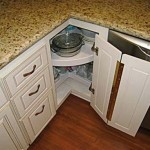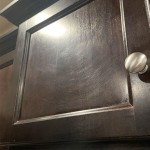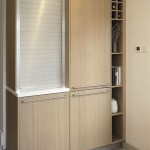Essential Aspects of Standard Depth of Kitchen Drawers
Kitchen drawers are an essential component of any kitchen design, providing storage and organization for various utensils, cookware, and other kitchen essentials. One crucial aspect to consider when designing kitchen drawers is their depth, which significantly impacts functionality, accessibility, and overall efficiency in the kitchen.
Standard kitchen drawer depths typically range from 18 to 24 inches. The appropriate depth for a drawer depends on its intended use and the size of the kitchen. Here are some key aspects to consider when determining the standard depth of kitchen drawers:
1. Accessibility and Usability:
The depth of a drawer affects how easily you can reach items stored inside. Drawers that are too deep can make it difficult to access items in the back, while drawers that are too shallow may not provide sufficient storage space. A standard depth of 18-24 inches offers a balance between accessibility and storage capacity.
2. Storage Capacity:
The depth of a drawer directly impacts its storage capacity. Deeper drawers can accommodate larger items, such as pots, pans, and bulky utensils. However, it's important to consider the overall layout of the kitchen and ensure that deeper drawers do not interfere with other appliances or cabinetry.
3. Drawer Type and Purpose:
The type of drawer and its intended purpose also influence the ideal depth. For example, shallow drawers are suitable for storing cutlery, utensils, and spices, while deeper drawers are more appropriate for pots, pans, and baking supplies. Consider the specific items you plan to store in each drawer to determine the optimal depth.
4. Kitchen Size and Layout:
The size and layout of the kitchen play a role in determining the standard depth of drawers. In smaller kitchens, shallower drawers may be more practical to maximize space. In larger kitchens, deeper drawers can provide ample storage without compromising accessibility.
5. Work Triangle and Efficiency:
The kitchen work triangle refers to the arrangement of the sink, stove, and refrigerator. The depth of drawers can impact the efficiency of the work triangle by affecting how easily you can access items while preparing meals. Standard drawer depths allow for easy movement and accessibility within the work triangle.
6. Aesthetic and Design Considerations:
In addition to functionality, the depth of drawers can also influence the overall aesthetic of the kitchen. Deeper drawers can create a more modern and sleek look, while shallower drawers may complement traditional or cozy kitchen designs. Consider the overall design style of the kitchen when selecting drawer depths.
7. Cost and Installation:
The depth of drawers can slightly affect the cost of materials and installation. Deeper drawers may require more materials and labor, leading to slightly higher costs. However, the investment in deeper drawers can be worthwhile if it enhances the functionality and storage capacity of your kitchen.
By considering these essential aspects, you can determine the standard depth of kitchen drawers that best meets the needs of your kitchen and cooking style. The right drawer depth will optimize storage, improve accessibility, enhance efficiency, and contribute to a functional and aesthetically pleasing kitchen.

Cabinet Sizes Blok Designs Ltd

Kitchen Cabinet Drawer Dimensions Standard Inspiration Ideas 3 Decorating Cabinets Height Measurements

Proper Depth For Frameless Cabinets

Cabinet Face Dimensions

600mm 2 1 Pan Drawer Base Unit Dimensions

Cabinet Sizes Blok Designs Ltd

Kitchen Unit Door Combinations

View Topic Show Your Walk In Pantry Home Renovation Building Forum Kitchen Cabinet Drawers Base Cabinets

Noyeks Kitchen Matrix Standard Unit Sizes Installations
-8197-p.jpg?strip=all)
Pine Traditional Style Ascending 3 Drawer Kitchen Base Unit 600mm
Related Posts








